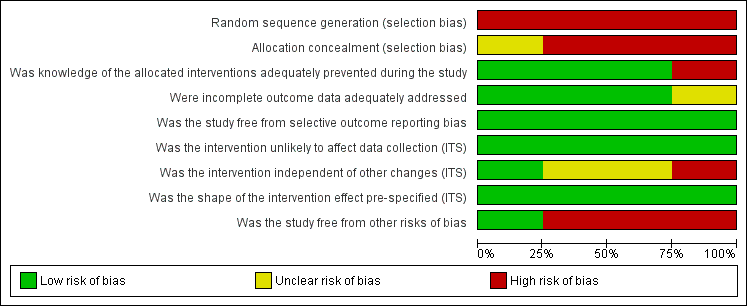Contenido relacionado
Revisiones y protocolos relacionados
Jan Klimas, Christopher Fairgrieve, Helen Tobin, Catherine‐Anne Field, Clodagh SM O'Gorman, Liam G Glynn, Eamon Keenan, Jean Saunders, Gerard Bury, Colum Dunne, Walter Cullen | 5 diciembre 2018
David R Foxcroft, Lindsey Coombes, Sarah Wood, Debby Allen, Nerissa ML Almeida Santimano, Maria Teresa Moreira | 18 julio 2016
Eileen FS Kaner, Fiona R Beyer, Claire Garnett, David Crane, Jamie Brown, Colin Muirhead, James Redmore, Amy O'Donnell, James J Newham, Frank de Vocht, Matthew Hickman, Heather Brown, Gregory Maniatopoulos, Susan Michie | 25 septiembre 2017
Roger E Thomas, Diane Lorenzetti, Wendy Spragins | 9 noviembre 2011
David R Foxcroft, Maria Teresa Moreira, Nerissa ML Almeida Santimano, Lesley A Smith | 29 diciembre 2015
Eileen FS Kaner, Fiona R Beyer, Colin Muirhead, Fiona Campbell, Elizabeth D Pienaar, Nicolas Bertholet, Jean B Daeppen, John B Saunders, Bernard Burnand | 24 febrero 2018
Conor Gilligan, Luke Wolfenden, David R Foxcroft, Amanda J Williams, Melanie Kingsland, Rebecca K Hodder, Emily Stockings, Tameka‐Rae McFadyen, Jenny Tindall, Shauna Sherker, Julie Rae, John Wiggers | 19 marzo 2019
Roberta Agabio, Emanuela Trogu, Pier Paolo Pani | 24 abril 2018
Programas universales de prevención de componentes múltiples para el abuso de alcohol en los jóvenes
David R Foxcroft, Alexander Tsertsvadze | 7 septiembre 2011
David R Foxcroft, Alexander Tsertsvadze | 7 septiembre 2011

















